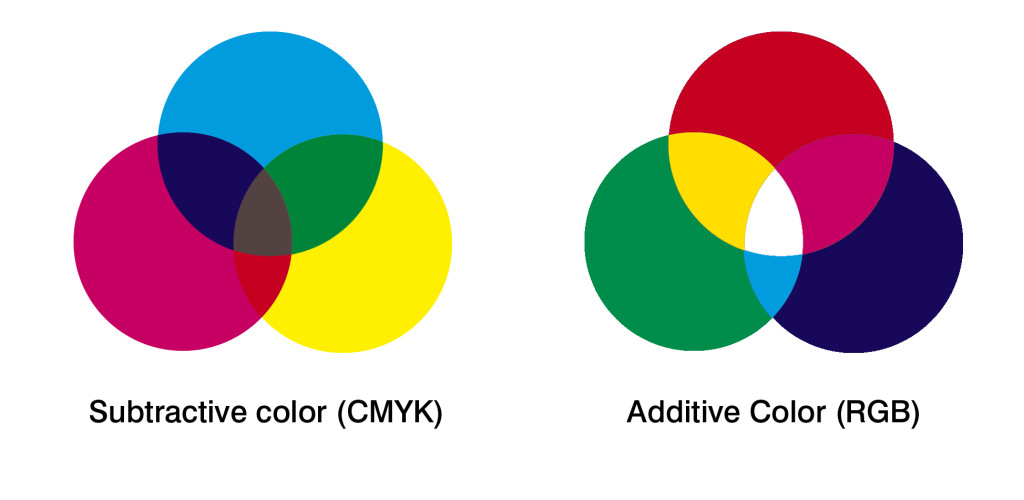What is the Difference Between RGB and CMYK in Designing for Print? « Back to list
One of the biggest mistakes you can make when designing something for print is to assume it will look the same on paper as it looks on your computer screen. While it’s easy to see how this mistake can be made, it’s important to understand why you need to know the difference between RGB and CMYK colours when it comes to print.
RGB colour mode:
RGB is the colour scheme that is often associated with electronic display screens such as cameras, TV’s and computer monitors (like the one you are currently looking at). RGB stands for three colours:
R = Red
G = Green
B = Blue
These three colours are mixed together on a screen to create every other colour you see. RGB is an additive colour model. This means that the 3 main colours are mixed together to create the various range of colours that you can see on electronic platforms.
CMYK colour mode:
CMYK is the colour scheme that is used by printers to create the many colours that end up on your page. It is made up of four colours:
C = Cyan
M = Magenta
Y = Yellow
K = Black
The CMYK colour model is a subtractive model because it subtracts the brightness from white. The colours from CMYK also come from the RGB colours being mixed whereby cyan (C) is a mix of green (G) and blue (B), magenta (M) is a mix of red (R) and blue (B) and yellow (Y) is a mix of red (R) and green (G). Black is added to the CMYK model as the 3 RGB colours cannot be mixed to create the colour black.
What is the difference between RGB and CMYK?
Well, the main thing to remember is that RGB is used for electronic prints (cameras, monitors, TV’s) and CMYK is used for printing. Therefore, when you are designing something for print, you will be using the colours of RGB. However, when it comes to actually printing the end product, it will be printed in CMYK and not RGB.
This means when you are ready to print you must ensure your file is saved in CMYK format. Saving a file as RGB for print can sometimes impact on the way certain colours are printed meaning you won’t get the finish you are after. Most printers will convert your RGB file to CMYK but it can result in some colours appearing washed out so it is best to have your file saved as CMYK beforehand. You can save your artwork in CMYK format when you are first saving it. This way you will be able to get a good understanding of how your final piece of artwork will look should you decide to print a copy in house for review.
 (Source: Design the Planet)
(Source: Design the Planet)
Converting RGB to CMYK:
Most design packages will be set to RGB as the default colour as it often has the widest range of colours to use. You can, however, change your colours to CMYK format during the design process. To accurately print a document or image you must convert the colour from the original RGB format to CMYK. It is possible to do this by using software such as Adobe Photoshop Illustrator.
If you have your artwork set up to CMYK and are importing images to add to your artwork, these images will likely be in RGB format. You will need to convert these images to CMYK using something like Adobe Photoshop before saving and adding to your final artwork. This ensures that any images placed in your file will be set to print as CMYK.
So when it comes to working on your next brochure, leaflet or poster, remember that on screen it is RGB but when printed it is CMYK. Be sure to check out our guide on creating production ready artwork for more information on the importance of saving your artwork in CMYK format for print.
For more information on getting your brochure ready for print and the importance of saving your artwork in CMYK, get in touch with the Digital Printing team today. You can also connect with Digital Printing on Facebook, Twitter, LinkedIn and Google+ if you have any print related questions you need answered.
So to leave you with one final thought remember:
• RGB for screen.
• CMYK for print.


